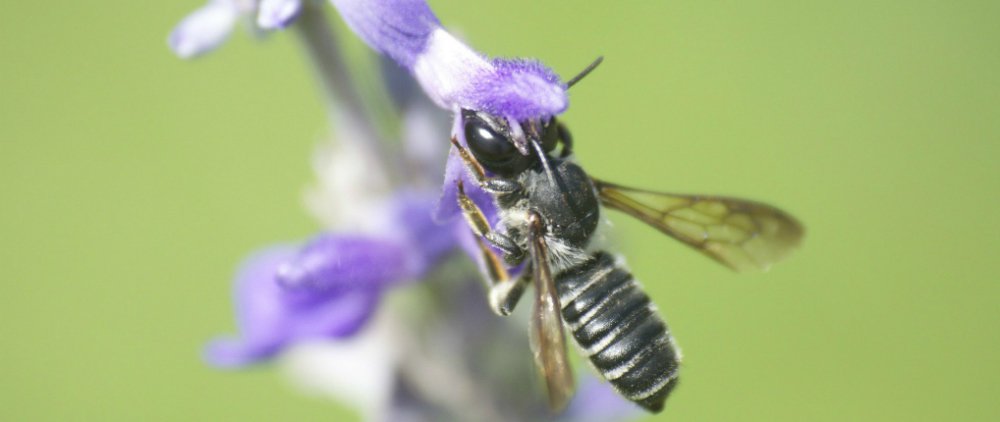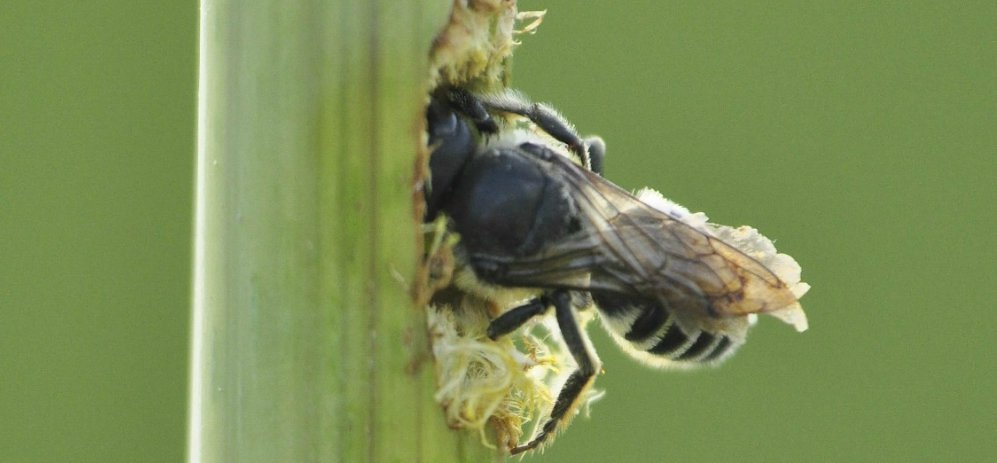Native Bee Needs
To support populations of native bees and other pollinators, we need to actively cater to their needs. The key to managing native bee populations is conserving and restoring habitat that contains good-quality resources. Native bees have two basic requirements, food in the form of pollen and nectar and a place to nest. These needs are best met in grasslands, old fields, or open woodlands that are free of pesticides and contain an abundance of native flowering plants.
Simple Needs
Nectar and pollen are the only food source for native bees. Most species benefit from sites with a diverse array of native herbaceous and woody plants which provide a succession of flowers from spring into early fall. While some native bees may be active as adults for only short periods of time (a few weeks to a month), bumble bees require a near continuous source of nectar and pollen from early spring, through summer, into fall to complete colony development. Additionally, different bee species have different active periods during the year. Some bees, like many mining bees, are primarily active in the spring. Others, like several long-horned bees, are active in the summer or fall. A gap in floral availability could cause a site to lose its complement of pollinators which forage in that window. Flowers across the growing season are needed to support the full complement of native pollinators.

Native solitary bee. Courtesy of Jessica Womack.
A secondary benefit of rich native plant diversity is increased availability of suitable egg-laying sites (host plants) for butterflies and moths. Host plant preferences vary greatly by species with some butterfly and moth species requiring very specific plants for egg-laying. The monarch butterfly (and its well-documented dependence on milkweed species is a classic example. Many other butterfly and moth species are far less specific and able to lay their eggs on a wide range of plant species. Consequently, increasing the number of native plants in an area can increase the number of butterfly and moth species that may be attracted to a site.
Along with nectar and pollen from flowers, native bees require suitable places to nest. Bees are considered central place-foragers, meaning that females conduct all of their collecting trips for food from one central point on the landscape: their nest site. The nesting habits of native bees can be broadly classified into three categories, ground-nesters (e.g. mining bees), tunnel nesters (e.g. mason bees), and cavity nesters (e.g. bumble bees).

Native solitary bee constructing nest in giant coneflower. Courtesy of Jessica Womack.
Most native bees are ground-nesters, nesting in self-made burrows in bare soil. Tunnel nesters use holes left by wood-boring beetle larvae in standing dead trees or chew their own cavities into dead wood or pithy stems. A small percentage of bees (e.g. bumble bees), are social colony builders and nest in pre-existing underground cavities (rodent burrows) within clumps of grass thatch, or in other insulated above-ground cavities.